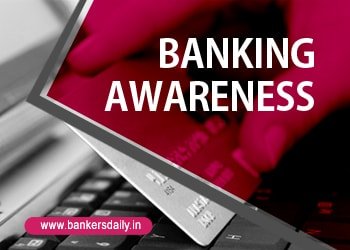ATM/White Label ATM – Based on FAQ’s
Want to Become a Bank, Central / State Govt Officer in 2020?
Join the Most awarded Coaching Institute & Get your Dream Job


Now Prepare for Bank, SSC Exams from Home. Join Online Coure @ lowest fee
Lifetime validity Bank Exam Coaching | Bank PO / Clerk Coaching | Bank SO Exam Coaching | All-in-One SSC Exam Coaching | RRB Railway Exam Coaching | TNPSC Exam Coaching | KPSC Exam Coaching
ATM/White Label ATM – Based on FAQ’s
1. What is an Automated Teller Machine (ATM)?
Ans 1. Automated Teller Machine is a computerized machine that provides the customers of banks the facility of accessing their account for dispensing cash and to carry out other financial & non-financial transactions without the need to actually visit their bank branch.
2. What are White Label ATMs (WLAs)?
Ans 2. ATMs set up, owned and operated by non-banks are called White Label ATMs. Non-bank ATM operators are authorized under Payment & Settlement Systems Act, 2007 by the Reserve Bank of India.
3. What is the difference between ATM and WLA (White Label ATM)?
Ans 3. i) In White Label ATM scenario, logo displayed on ATM machine and in ATM premises pertain to WLA Operator instead of a bank. However, for a customer, using WLA is just like using the ATM of other bank (bank other than card issuing bank). ii) Acceptance of cash deposits at the WLAs is not permitted at present.
4. What has been the rationale of allowing non-bank entities for setting up of WLAs?
Ans 4. The rationale of allowing non-bank entity to set up White Label ATMs has been to increase the geographical spread of ATM for increased / enhanced customer service.
5. What type of cards can be used at an ATM/WLA?
Ans 5. The ATM/ATM cum debit cards, credit cards and open prepaid cards (that permit cash withdrawal) issued by banks can be used at ATMs/WLAs for various transactions.
6. What are the services/facilities available at ATMs/WLAs?
Ans 6. In addition to cash dispensing, ATMs/WLAs may offer many other services/facilities to bank customers. Some of these services include:
Account Information
Cash Deposit (Acceptance of deposits are not permitted at WLAs)
Regular Bills Payment (not permitted at WLAs)
Purchase of Re-load Vouchers for Mobiles (not permitted at WLAs)
Mini/Short Statement
PIN change
Request for Cheque Book
7. How can one transact at an ATM/WLA?
Ans 7. For transacting at an ATM/WLA, the customer inserts /swipes his/her Card in the ATM/WLA and enters his/her Personal Identification Number (PIN). Usually the transactions are menu driven for facilitating easy operation.
8. What is Personal Identification Number (PIN)?
Ans 8. PIN is the numeric password which is separately mailed / handed over to the customer by the bank while issuing the card. Most banks require the customers to change the PIN on the first use. Customer should not disclose PIN to anybody, including to bank officials. Customers should change the PIN at regular intervals.
9. Can these cards be used at any bank/non-bank ATM (WLA) in the country?
Ans 9. Yes. The cards issued by banks in India may be used at any bank / white label ATM in the country.
10. Are customers entitled to any free transactions at ATMs?
Ans.10. Yes. With effect from November 01, 2014, a bank must offer to its savings bank account holders a minimum number of free transactions at ATMs as under:
Transactions at a bank’s own ATMs at any location: Banks must offer their savings bank account holders a minimum of five free transactions (including both financial and non-financial) in a month, irrespective of the location of ATMs.
Transactions at any other banks’ ATMs at Metro locations: In case of ATMs located in six metro locations, viz. Mumbai, New Delhi, Chennai, Kolkata, Bengaluru and Hyderabad, banks must offer their savings bank account holders a minimum of three free transactions (including both financial and non-financial transactions) in a month.
Transactions at any other banks’ ATMs at Non-Metro locations: At other locations, banks must offer the savings bank account holders a minimum of five free transactions (including both financial and non-financial transactions) in a month at other bank ATMs.
RBI has mandated only the minimum number of free transactions at ATMs. Banks may offer more number of transactions free of cost to their customers.
The above does not apply to Basic Savings Bank Deposit Accounts (BSBDA) as withdrawals from BSBDA are subject to the conditions associated with such accounts.
11. Are customers charged for any transaction at ATMs?
Ans 11. Yes, customers can be charged for transactions at ATMs over and above the mandated number of free transactions (as indicated in answer to 10 above). In case a bank decides to levy charges, the customer can be charged a maximum of Rs. 20/- per transaction (plus service tax, if any) by his/her bank.
12. What should be done if card is lost / stolen?
Ans 12. The customer should contact the card issuing bank immediately on noticing the loss / theft of the card and should request the bank to block the card.
13. From where the customer can get the contact numbers for lodging a complaint?
Ans 13. Banks are required to display the name and the contact numbers of concerned officers/toll free numbers /help desk numbers in the ATM premises. Similarly, in WLAs, contact number of officials/toll free numbers/ helpline numbers are also displayed for lodging any complaint regarding failed/disputed transactions.
14. What steps should a customer take in case of failed ATM transaction at other bank/white label ATMs, when his / her account is debited?
Ans 14. The customer should lodge a complaint with the card issuing bank at the earliest. This process is applicable even if the transaction was carried out at another bank’s/non-bank’s ATM. In case of WLAs, the contact number/toll free numbers are also available for lodging complaints regarding failed transactions at their ATMs.
15. Is there any time limit for the card issuing banks for recrediting the customers account for a failed ATM/WLA transaction indicated under No. 14?
Ans 15. As per the RBI instructions (DPSS.PD.No.2632/02.10.002/2010-2011 dated May 27, 2011), banks have been mandated to resolve customer complaints by re-crediting the customer’s account within 7 working days from the date of complaint.
16. Are the customers eligible for compensation for delays beyond 7 working days?
Ans 16. Yes. Effective from July 1, 2011, banks have to pay compensation of Rs. 100/- per day for delays in re-crediting the amount beyond 7 working days from the date of receipt of complaint for failed ATM transactions. The compensation has to be credited to the account of the customer without any claim being made by the customer. If the complaint is not lodged within 30 days of transaction, the customer is not entitled for any compensation for delay in resolving his / her complaint.
17. What is the course of action for the customer if the complaint is not addressed by his/her bank within the stipulated time / not addressed to his/her satisfaction?
Ans 17. The customer can take recourse to the Banking Ombudsman, if the grievance is not redressed by his/her card issuing bank.
18. What is the Grievance Redressal Mechanism available to users of WLAs in case of failed/disputed WLA transactions?
Ans 18. The Grievance Redressal Mechanism available to users of WLA is same as that available to users of banks’ ATMs for failed/disputed transactions. While the primary responsibility to redress grievances of customers relating to failed transactions at such WLAs will vest with the card issuing bank, the sponsor bank will provide necessary support in this regard, ensuring that White Label ATM Operator (WLAO) makes available relevant records and information to the Issuing bank.
19. What should be done to the ATM card when the card is expired or the account is closed?
Ans 19. Customer should destroy the card upon card expiry or closure of account, cut it into four pieces through the magnetic strip/chip before disposing it off.
20. How shall the customer keep his/her ATM/WLA transaction secure?
Ans 20. Customers should observe following Do’s and Don’ts to keep their transaction safe and secure at ATM/WLA:
Customer should conduct any ATM/WLA transaction in complete privacy.
Only one card holder should enter and access ATM/WLA kiosk at a time.
He/she should never lend his/her card to anyone.
Do not write PIN on the card.
Never share PIN with anyone or seek help from anybody by handing over the card and revealing the PIN.
Never let anyone see the PIN while it is being entered at the ATM
Never use a PIN that could be easily guessed. e.g. his/her birthday, birthday of spouse or telephone number.
Never leave card in the ATM/6WLA.
Register mobile number with the card issuing bank for getting alerts for ATM /WLA transactions. Any unauthorized card transaction in the account, if observed, should be immediately reported to the card issuing bank.
Beware of any extra devices attached to the ATMs/WLAs. These may be put to capture customer’s data fraudulently. If any such device is found, inform the security guard / bank/ white label ATM entity maintaining it immediately.
Keep an eye on suspicious movements of people around ATMs/WLAs. Customer should beware of strangers trying to engaging him/her in conversation or offering assistance / help in operating the ATM.
Remember that bank officials will never ask for card details or PIN over telephone / email. So, do not respond to any vishing / phishing mails from people indicating that they represent your bank.





